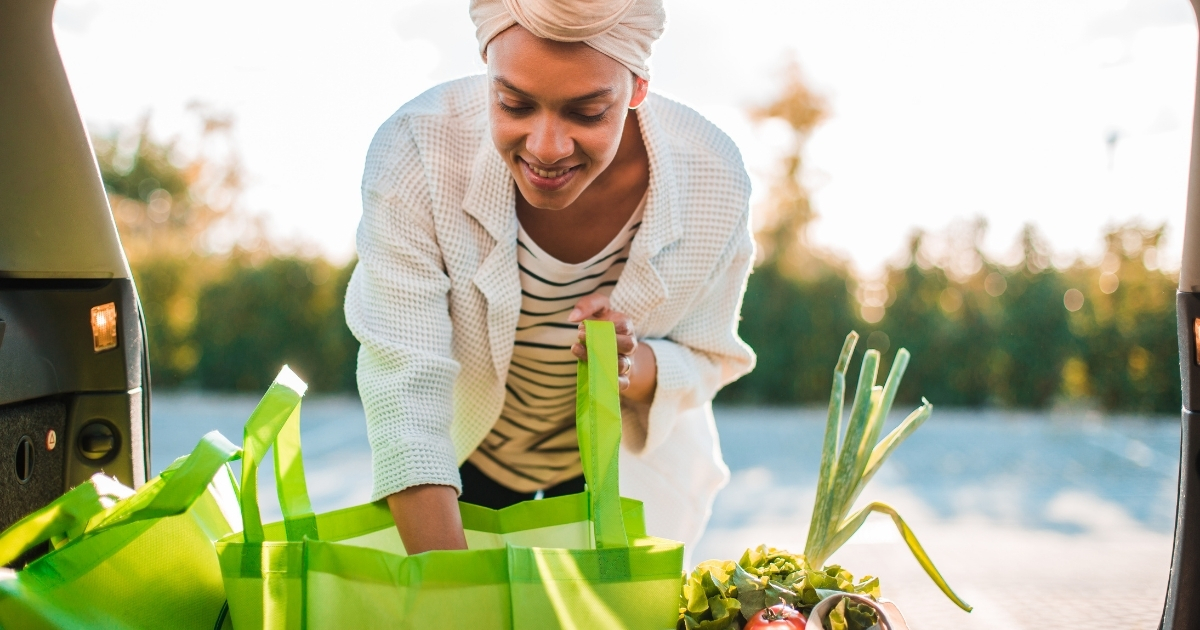
Category: Cooperative Extension

Could your reusable grocery bag be making your family sick?
May 17, 2021 Written by Kathleen Splane MS, Extension Agent & FCS Program Leader
According to The Environmental Protection Agency the average American produces about 1300 pounds of non-recyclable waste each year. Plastic shopping bags are included in that total. The phrase Reduce, Reuse, Recycle is something we’ve all heard. But how many of us really make a conscious effort to do this? When it comes to plastic bags, Delawareans have been given a push to reuse. In January 2021 a law went into effect banning most retailers, including grocery stores, from providing plastic bags. Because many stores are now charging for bags it’s encouraged that we bring our own.
When it comes to food safety, many of us have heard the term cross-contamination. This is the process by which bacteria are unintentionally transferred from one object to another with harmful effects. Without proper care, reusing plastic or fabric bags for groceries is the perfect vehicle for cross contamination. Carelessness in handling reusable bags can result in food safety risks.
Reusable bags are a smart choice but it’s important to remember some tips on safe use:

- When shopping, put meat, poultry, and fish in separate plastic bags before placing in the bag you brought from home. A disposable plastic bag will help contain any juices from raw meat, fish, or poultry packages and not allow those juices to touch other foods and contaminate them. It will also prevent juices from leaking and contaminating your reusable bags and foods. Be sure to use a twist tie to close the bag. You may have to go to the produce section to find twist ties. Immediately after use, throw away disposable plastic bags used for raw meat, fish, or poultry. Never reuse the plastic bags that contained these items.
- When checking out at the store be sure to use separate bags. Dedicate one bag to meat, fish, poultry, another to fresh fruits and vegetables and another to ready to eat foods. It’s also a good idea to keep these items separated in your shopping cart, on the checkout line’s conveyor belt and at home. This will help prevent bacteria from spreading.
- Wash your grocery bags frequently in the washing machine or by hand with hot soapy water. Cloth reusable bags should be washed in the washing machine using laundry detergent. They should be dried in the dryer or air dried. Plastic reusable bags, including insulated bags should be washed using hot water and soap, then air dried. Be sure to pay special attention to the seams. Before storing make sure that both cloth and plastic reusable bags are dry.
- Be sure to designate some of your reusable bags for groceries only. Bags used for groceries should only be used for food. Don’t carry items like toys, gym clothes and other items in the same bags you take to the grocery store.
- Keep your bags away from pets. A few years ago, before the bag ban in Delaware went into effect, one of the grocery chains would pay you $.10 for each bag you brought from home. That was incentive enough for customers to do so. On one occasion, in conversing with the employee checking me out, she said one of the biggest challenges for her was having to handle bags brought in by customers who had pets at home. They would often be covered with dog and cat hair! Keeping the bags away from pets seems like an obviously good idea, but a little reminder can’t hurt.
- To reduce cross contamination, clean all areas where you place your bags, such as kitchen counters and tables. Cross contamination can go both ways. Your bags can be contaminated by a dirty surface and your surface can be contaminated by a dirty bag.
- Remember-cold food needs to be refrigerated within two hours of leaving the store, regardless of what kind of bag you use. As the temperatures get warmer and get above 90 degrees, cold food should be refrigerated within one hour.
- Don't keep your bags in your trunk. Although it seems like a logical storage place, it isn’t recommended that you store your bags in your trunk. This is a dark, warm, and often humid environment that promotes bacterial growth.
We are all getting used to remembering to bring our bags into the store. Now it’s important to remember the next step-keeping those bags clean and ready to use. A healthy environment is as important as a healthy family!
